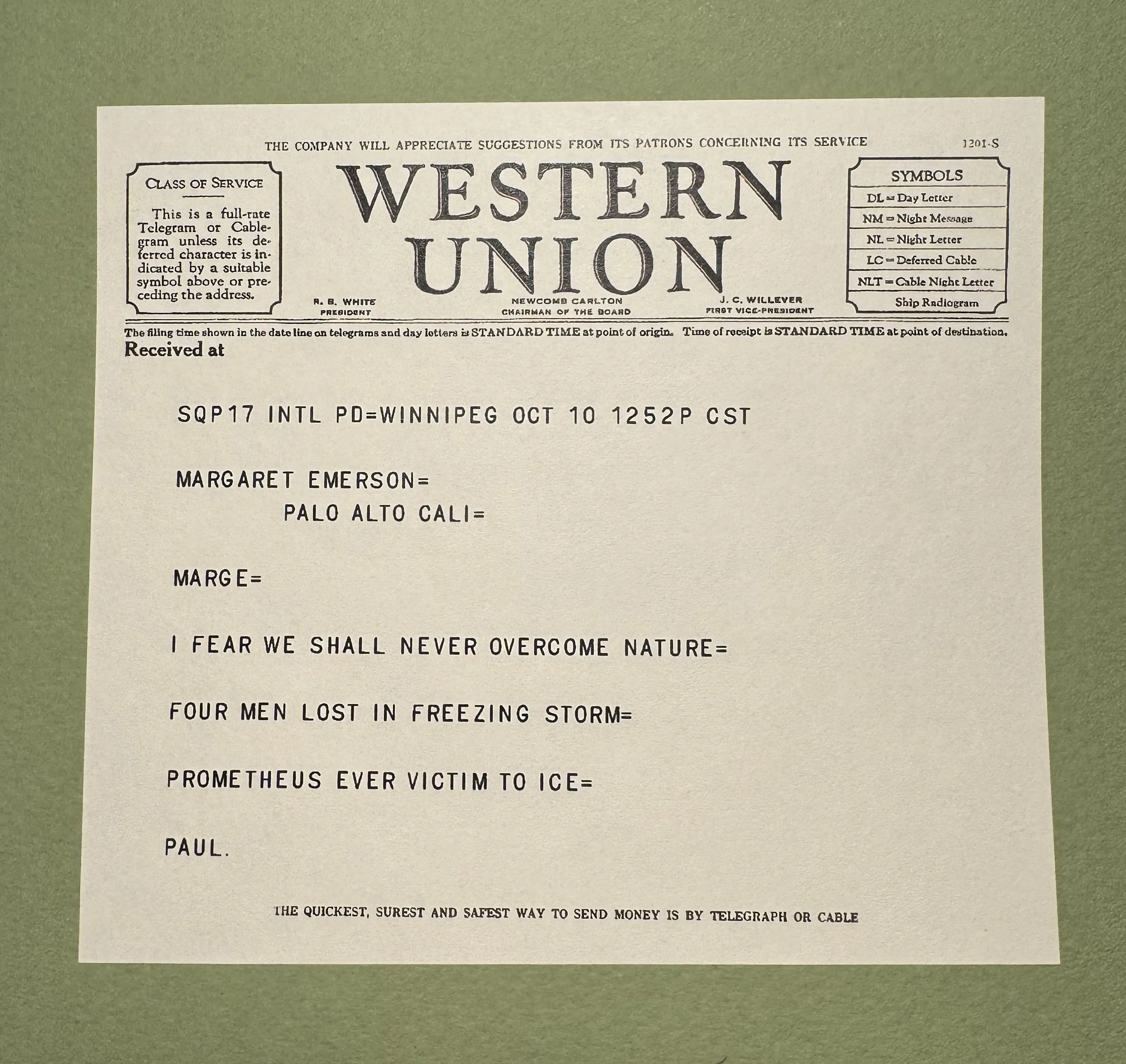Decades ago, a neighbor asked me whether I wanted some photos that had been left behind in an abandoned rental property he had purchased from the city.
I found them again one day, after returning from a trip to visit Tom Phillips in London, and said: “I will make my own project out of these.”
there were many Hundreds of photos in the archives, which spanned 1930s at the U of MN and wherever “THE PHOTOGRAPHER” called “HOME” to the 1940s in the ARctic and in Burma during the Second World war. A friend and I spent a NIGHT laying them out in what we called “LYRIC order".”
What does a PHOTO with No context mean? How do we inhabit the ecology of our images?
what does it mean to EXPLORE AN ARCHIVE THAT IS IN LARGE PART itSELF A FICTION? could I do that using poetry as a medium?
AS the project evolved, it became both more narrative—and more intentionally physicaL. I found old telegrams and made a template for making more of them.
I structured the work to evolve on purpose, over time: new work can fit in old boxes. new dreams can replace old memories. revision can become part of the life of the work.
“The Photographer” became “PAUL” and everything became subject to manipulation—I wanted the work to perform many of its own questions.
as a Marine war veteran, i know only too well how the memory of war can change on an almost daily basis.
I also know that the work of war is not just of killing, but the waste of our environment, feats of engineering and logistics, and of boredom. deadly boredom.
WAR | MACHINE is an attempt to make tangible the everyday possibility of telling A story new, again and again, with RICHER understandings and a more expansive vision of what it means to know both ourselves—and our conditions of extinction.
(Enter Passcode from Invitation to Access Editions)

